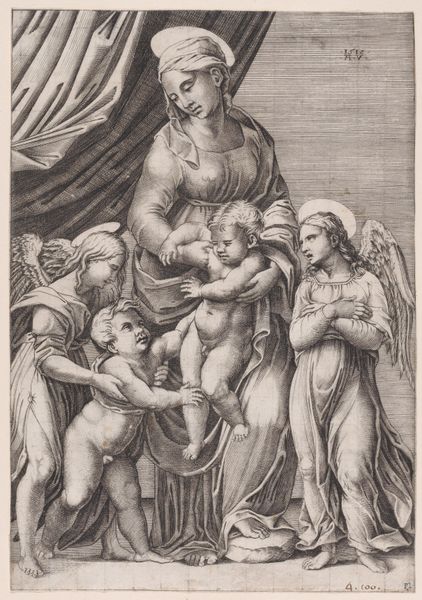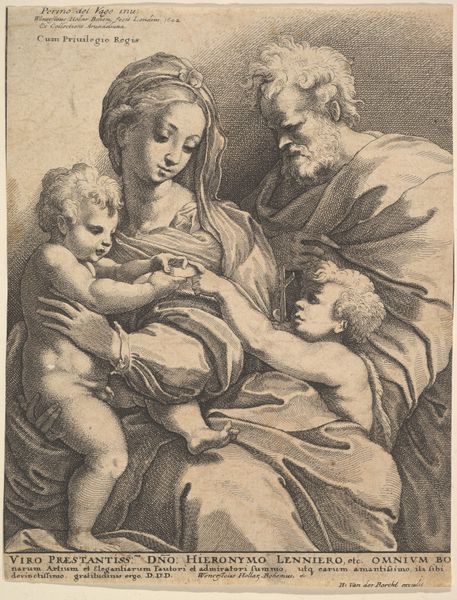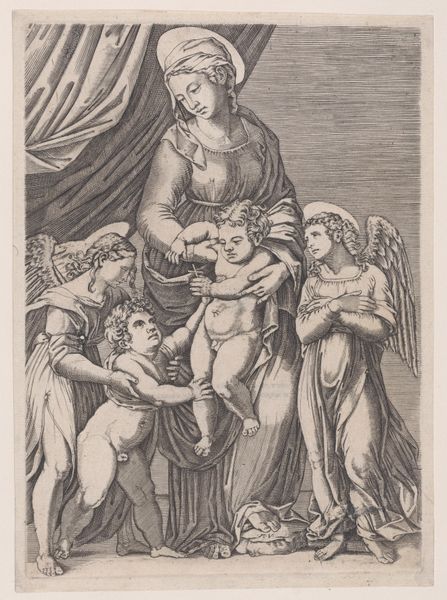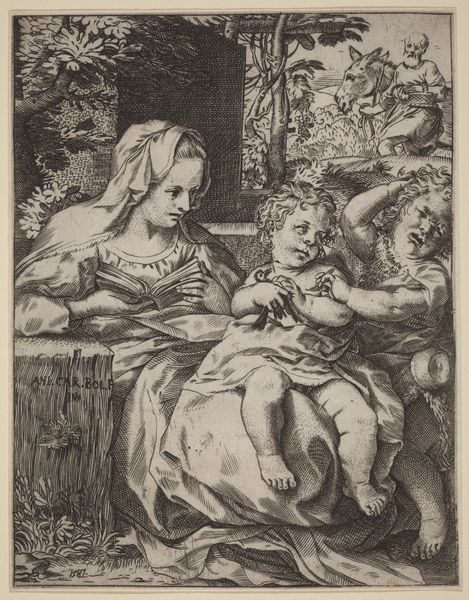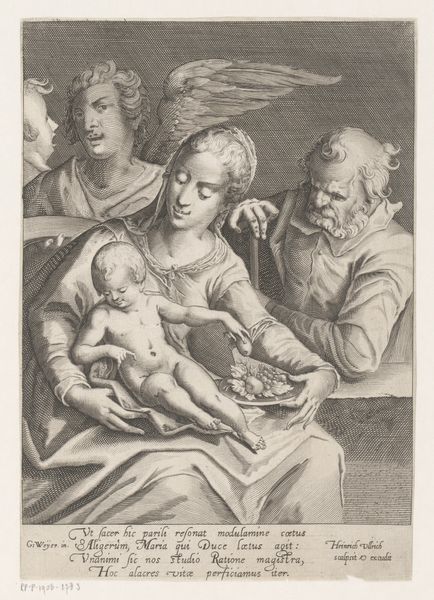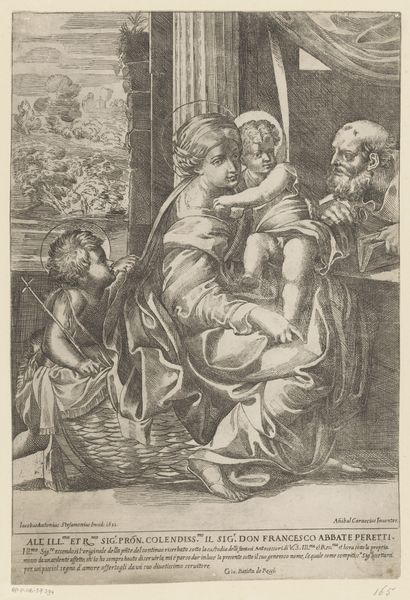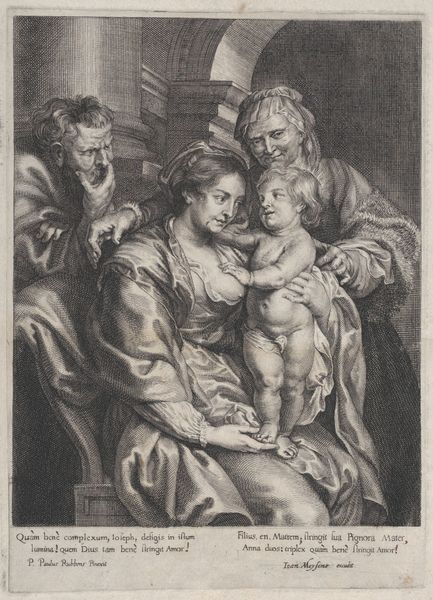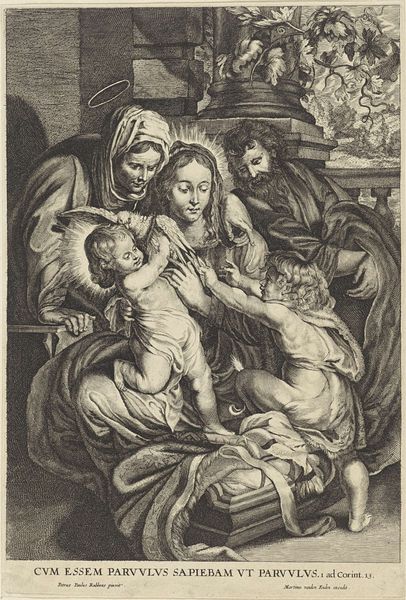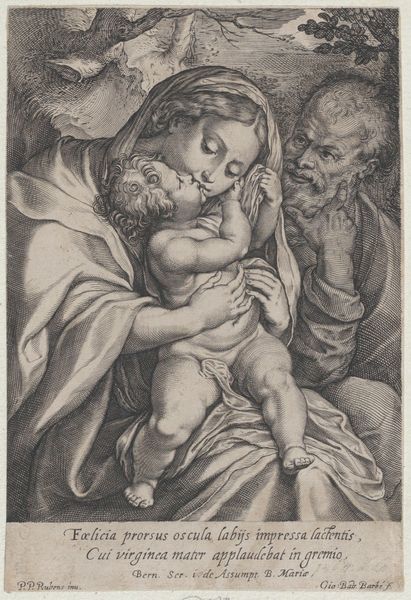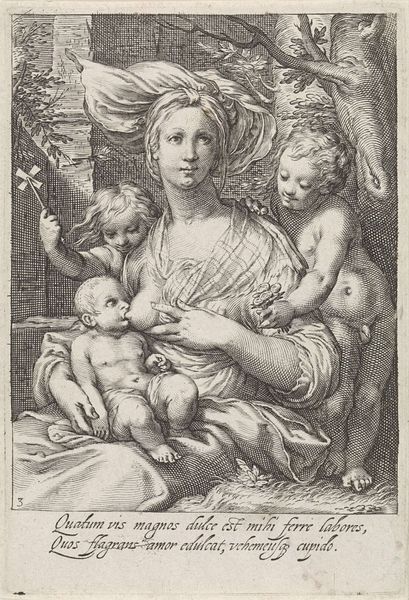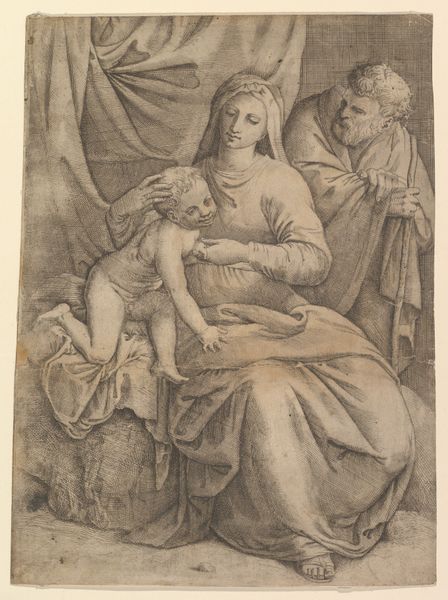
The Holy Family with Saint Elizabeth and the infant Saint John the Baptist 1610 - 1680
0:00
0:00
drawing, print, etching, engraving
#
portrait
#
drawing
#
baroque
# print
#
etching
#
old engraving style
#
figuration
#
history-painting
#
engraving
Dimensions: Sheet (Trimmed): 14 in. × 13 7/16 in. (35.5 × 34.2 cm)
Copyright: Public Domain
Curator: Examining this print, the formal language is immediately apparent. The tightly packed figuration is Baroque, with its overt classicism. Editor: Yes, an initial sense of somber intimacy does emerge. The tones seem quite restricted, mostly monotone grays which adds to the gravity. The scale looks moderate. This piece gives us "The Holy Family with Saint Elizabeth and the infant Saint John the Baptist," after Peter Paul Rubens, engraved by Phillip Joseph Tassaert, likely between 1610 and 1680. Curator: Exactly, observe the way the figures occupy space: the older woman’s crinkled expression, the infant saints' corpulent forms...it’s carefully staged to emphasize familial bonds and sanctity. Look how the artist manipulates light and shadow. It adds dimensionality, don't you agree? Editor: I see that the process of transferring a painted oil work onto a printed form involves translation— from painter's hands to engraver. These prints were commodities. What about their reception amongst varied classes, as visual knowledge available on paper to be circulated widely. And note that even the materiality of paper had value at the time, how those details inform the visual representation. Curator: Agreed. There's clear formal precision, rendering these allegorical and historical scenes more accessible. Consider how Tassaert's choices direct our eyes, emphasizing a moral hierarchy through compositional choices and skillful rendering. It’s almost diagrammatic, like Baroque theory itself! Editor: Precisely! Looking through such work we can uncover that such reproduction and consumption had material repercussions; printmakers required funding, worked for merchant distributors. Even looking closely, these faint lines indicate both skilled labor and industry in concert together. Curator: It reveals so much of the period's aesthetic and intellectual investments in art, right down to its symbolic infrastructure. The density and geometry do it for me. Editor: Absolutely, recognizing art isn't purely formal is important too. These images offer windows into artistic workshops that reveal social systems as well as visual design. They bring different dimensions and value in appreciating the work.
Comments
No comments
Be the first to comment and join the conversation on the ultimate creative platform.
